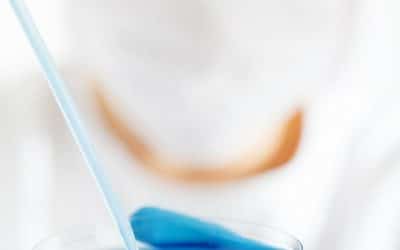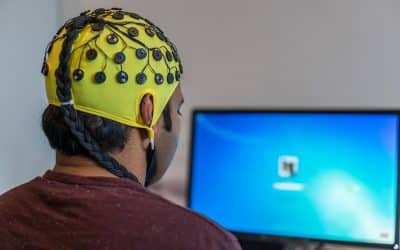Abstract: To catalog the side effects of 2.4 atmospheres absolute (atm abs) hyperbaric oxygen (HBO2) vs. sham on post-concussion symptoms in military service members with combat-related, mild traumatic brain injury (TBI). Fifty subjects diagnosed with TBI were...
Traumatic Brain Injury (TBI)
Hyperbaric Oxygen Therapy (HBOT) Research for Traumatic Brain Injury (TBI).
Hyperbaric oxygen, mild traumatic brain injury, and study design: an elusive target.
Abstract: Mychaskiw, Stephens, , , , , , , (2013). Hyperbaric oxygen, mild traumatic brain injury, and study design: an elusive target. Journal of neurotrauma, 2013 Oct;30(19):1681-2. https://www.ncbi.nlm.nih.gov/pubmed/23270538
Hyperbaric oxygen therapy for the adjunctive treatment of traumatic brain injury.
Abstract: Traumatic brain injury is a common health problem with significant effect on quality of life. Each year in the USA approximately 0.56% of the population suffer a head injury, with a case fatality rate of about 40% for severe injuries. These account for a...
Preconditioning provides neuroprotection in models of CNS disease: paradigms and clinical significance.
Abstract: Preconditioning is a phenomenon in which brief episodes of a sublethal insult induce robust protection against subsequent lethal injuries. Preconditioning has been observed in multiple organisms and can occur in the brain as well as other tissues. Extensive...
The effect of hyperbaric oxygen on symptoms after mild traumatic brain injury.
In this single-center, double-blind, randomized, sham-controlled, prospective trial at the U.S. Air Force School of Aerospace Medicine, the effects of 2.4 atmospheres absolute (ATA) hyperbaric oxygen (HBO₂) on post-concussion symptoms in 50 military service members with at least one combat-related, mild traumatic brain injury were examined. Each subject received 30 sessions of either a sham compression (room air at 1.3 ATA) or HBO₂ treatments at 2.4 ATA over an 8-week period. Individual and total symptoms scores on Immediate Post-Concussion Assessment and Cognitive Testing (ImPACT®) and composite scores on Post-traumatic Disorder Check List-Military Version (PCL-M) were measured just prior to intervention and 6 weeks after completion of intervention. Difference testing of post-intervention means between the sham-control and HBO₂ group revealed no significant differences on the PCL-M composite score (t=-0.205, p=0.84) or on the ImPACT total score (t=-0.943, p=0.35), demonstrating no significant effect for HBO₂ at 2.4 ATA. PCL-M composite scores and ImPACT total scores for sham-control and HBO(2) groups revealed significant improvement over the course of the study for both the sham-control group (t=3.76, p=0.001) and the HBO₂ group (t=3.90, p=0.001), demonstrating no significant HBO₂ effect. Paired t-test results revealed 10 ImPACT scale scores in the sham-control group improved from pre- to post-testing, whereas two scale scores significantly improved in the HBO₂ group. One PCL-M measure improved from pre- to post-testing in both groups. This study showed that HBO₂ at 2.4 ATA pressure had no effect on post-concussive symptoms after mild TBI.
Mitochondria in traumatic brain injury and mitochondrial‐targeted multipotential therapeutic strategies
Abstract Traumatic brain injury (TBI) is a major health and socioeconomic problem throughout the world. It is a complicated pathological process that consists of primary insults and a secondary insult characterized by a set of biochemical cascades. The imbalance...
Hyperbaric oxygen for post-concussion syndrome: design of Department of Defense clinical trials.
Abstract: The current wars in the Middle East have resulted in between 10-20% of U.S. service members with mild traumatic brain injury (mTBI). While anecdotal reports have associated hyperbaric oxygen (HBO2) with improved outcomes after mTBI, controlled research is...
Role of hyperbaric oxygen therapy in severe head injury in children.
Abstract: A brain injury results in a temporary or permanent impairment of cognitive, emotional, and/or physical function. Predicting the outcome of pediatric brain injury is difficult. Prognostic instruments are not precise enough to reliably predict individual...
Attenuation of interleukin-1beta by pulsed electromagnetic fields after traumatic brain injury
Abstract Traumatic Brain Injury (TBI) is a major cause of morbidity and mortality in civilian and military populations. Interleukin-1beta (IL-1β) is a pro-inflammatory cytokine with a key role in the inflammatory response following TBI and studies indicate that...


